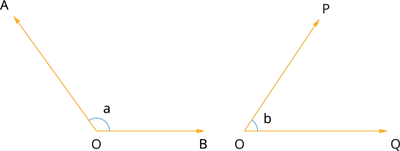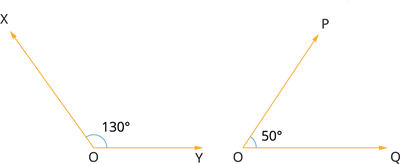PDF chapter test TRY NOW
Let us discuss what supplementary angles are.
Definition:
When the sum of the two angles is 180^{\circ}, the angles are said to be supplementary angles.

In the figure, \angle AOB and \angle POQ is a pair of angles.
The angles AOB and POQ are said to be supplementary if \angle AOB + \angle POQ = 180^{\circ}.
Example:
Verify if the given pair of angles are supplementary.

Solution:
Given:
\angle XOY = 130^{\circ}
\angle POQ = 50^{\circ}
To verify:
Whether the given two angles are supplementary.
Verification:
Add the given two angles.
\angle XOY + \angle POQ = 130^{\circ} + 50^{\circ}
= 180^{\circ}
Since the sum of the two angles is 180^{\circ}, by definition, the pair of angles XOY and POQ are supplementary.
Important!
When two angles are supplementary, each angle is said to be the supplement of the other.
Here \angle XOY is the supplement of \angle POQ and vice versa.
In other words, 130^{\circ} angle is the supplement of 50^{\circ} angle and vice versa.
